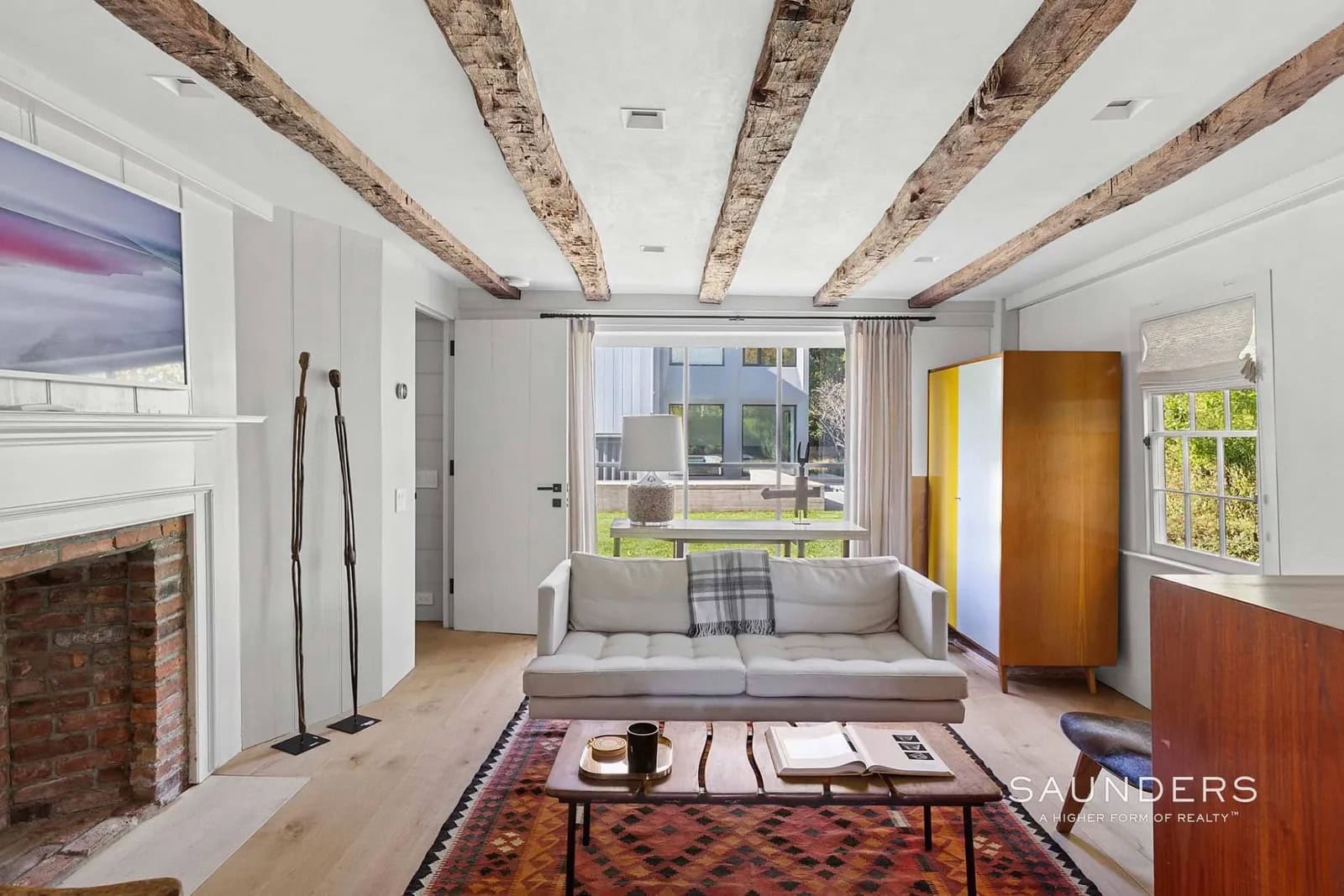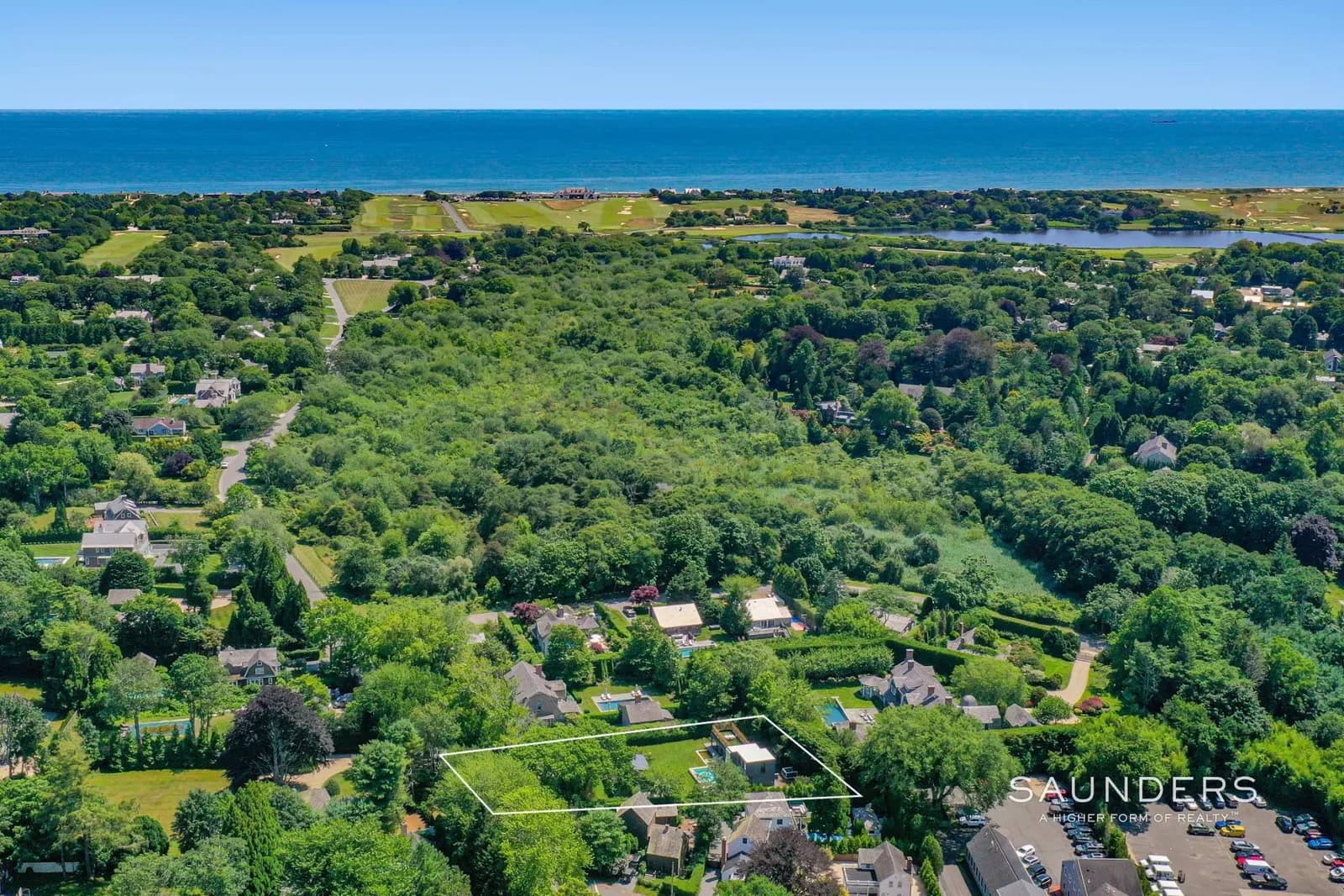
The Hamptons’ architectural identity in the 21st century is anything but uniform. East Hampton, especially, has always been defined by multiple schools of architecture spanning centuries and multitudes of environmental landscapes.
For some, the enduring image of the Hamptons is the traditional cedar-shake-sided estate; for others, the many iconic modern and contemporary homes define the East End.
But, it is not either/or, one-or-the-other, “The Hamptons” identity is as much associated with Stanford White as Norman Jaffe – the architectural legacy is manifold, never static, highlighting the East End’s unique visual and cultural landscape.
In East Hampton, bringing together the traditional and contemporary is nothing new; rather, it is a participation in an essentially Hamptons experience of defining the luxury of living today.
In 2025, historic properties like 13 Egypt Lane represent and uphold an aesthetic vernacular that is crucial to retaining the essence of East Hampton Village. Now, after renovation and expansion, the compound at 13 Egypt Lane symbolizes, in equal measure, respect and reverence for the past and the inspiration of contemporary architecture.
13 Egypt Lane is now in contract, listed by Greg Baker at Saunders & Associates.

HISTORY & SIGNIFICANCE
Originally built circa 1740, although some records cite the early 19th century, the Hiram Sanford House was once home to the operator of the Pantigo Windmill located just to the North. Still standing today, the Windmill is itself a symbol of the interaction between tradition and modernity.
At the time of its construction, the Windmill was a reminder of technology; today, it symbolizes East Hampton’s well-established historical legacy. Our appreciation for the Windmill today highlights our celebration of the Village’s history; while, at the time of its construction, the Windmill represented modernity and the many luxuries promised by innovation and development.
That respect for the past and the future informs East Hampton Village’s Trimber-Frame Landmark Laws, which allow landmarked houses of this age to remain preserved while permitting a modern addition on the same lot. The present-day compound at 13 Egypt Lane beautifully illustrates the intention and implementation behind the laws – a beautiful piece of history that is ready for luxury living today and for generations to come.
ARCHITECTURE
In 2017, the current owners set about to transform the historic property into an exceptionally chic and luxurious compound – all while retaining the historic structure and in-kind architecture.

The timeless charm of the now-restored Sanford House is retained with the weathered texture of original timber beams original exposed beams, wide‑plank hardwood floors, and twin fireplaces. Classic period details include a Rumford cooking hearth while discrete modern upgrades ensure the home will accommodate generations to come.
Attached by a courtyard is a bright, contemporary steel-and-glass residence, designed by Tom Morbitzer of Ammor Architecture LLP. Inside, a great room with open kitchen a sleek sliding glass wall opens into the courtyard and visually connects the interior and exterior. Outdoor amenities are thoughtfully integrated: an infinity-edge pool and spa flow into a wraparound pond, while a rooftop lounge framed by muted beach grass offers privacy with views.
RENOVATION
What stands today is a union of past and present – delivering immediate luxury living, architectural provenance, and a generational estate set within one of the most prestigious communities in the country.

The property gracefully bridges preservation and modern design, thoughtfully blending meticulous restoration of a historic residence with a sophisticated contemporary addition.
Life in East Hampton Village has always been inherently lifestyle-forward, intentionally distinct from grand countryside estates or continental villas—offering instead an intimate blend of leisure, peace, and privacy, thoughtfully cultivated for those who value understated elegance and refined coastal living. The seamless integration of modern architecture and contemporary amenities at 13 Egypt Lane reflects a longstanding Hamptons tradition, where architectural innovation and luxurious comfort have long been essential elements of the area’s sophisticated identity.
Greg Baker adds, “It’s been a true pleasure representing this exceptional property. I’ve gained a deep appreciation for both the Village’s legislation that enabled this project and the seller and their design team who embraced such a special and important endeavor. East Hampton Village’s timber frame laws allowed for the unique compound configuration, combining the historic home with the new steel house. The striking juxtaposition of old and new inspired much of the design work by the talented architects at Ammor Architecture LLP in NYC. It’s refreshing to see something so distinctive—a perfect blend of history and modernity that truly works.”
Egypt Lane & Village History
Just south of East Hampton Village’s Main Street, the Egypt Lane Historic District is an iconic enclave lined with colonial and Federal-style homes, modern masterpieces, and generational estates. Here reads, in miniature, the past, present, and future of Hamptons’ legacy and lifestyle; where preservationists and artists have long converged, and where architectural innovation has always coexisted with steadfast tradition.

Beyond Egypt Lane, East Hampton has consistently drawn artists and high society alike, evidenced in the graceful interplay of saltbox cottages, coastal farmhouses, traditional estates, and unapologetically modern homes—each property a chapter in the Hamptons’ evolving aesthetic story. Today, the luxury of life on Egypt Lane remains true to its original promise: an intentional escape from the city, a sanctuary for communion with nature—and, less abstractly, proximity to one of the world’s most beloved and exclusive golf courses.











